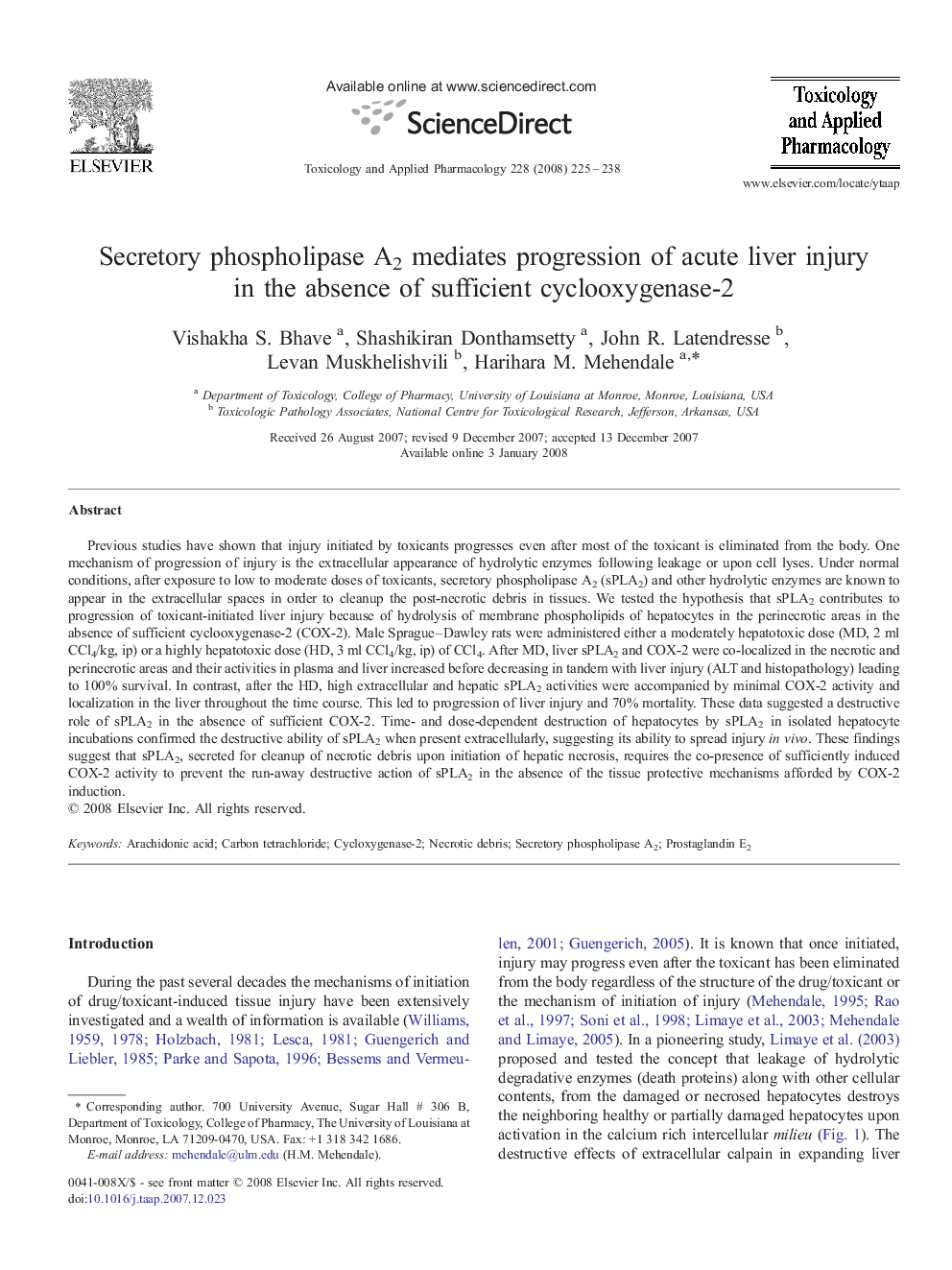| کد مقاله | کد نشریه | سال انتشار | مقاله انگلیسی | نسخه تمام متن |
|---|---|---|---|---|
| 2570440 | 1128585 | 2008 | 14 صفحه PDF | دانلود رایگان |

Previous studies have shown that injury initiated by toxicants progresses even after most of the toxicant is eliminated from the body. One mechanism of progression of injury is the extracellular appearance of hydrolytic enzymes following leakage or upon cell lyses. Under normal conditions, after exposure to low to moderate doses of toxicants, secretory phospholipase A2 (sPLA2) and other hydrolytic enzymes are known to appear in the extracellular spaces in order to cleanup the post-necrotic debris in tissues. We tested the hypothesis that sPLA2 contributes to progression of toxicant-initiated liver injury because of hydrolysis of membrane phospholipids of hepatocytes in the perinecrotic areas in the absence of sufficient cyclooxygenase-2 (COX-2). Male Sprague–Dawley rats were administered either a moderately hepatotoxic dose (MD, 2 ml CCl4/kg, ip) or a highly hepatotoxic dose (HD, 3 ml CCl4/kg, ip) of CCl4. After MD, liver sPLA2 and COX-2 were co-localized in the necrotic and perinecrotic areas and their activities in plasma and liver increased before decreasing in tandem with liver injury (ALT and histopathology) leading to 100% survival. In contrast, after the HD, high extracellular and hepatic sPLA2 activities were accompanied by minimal COX-2 activity and localization in the liver throughout the time course. This led to progression of liver injury and 70% mortality. These data suggested a destructive role of sPLA2 in the absence of sufficient COX-2. Time- and dose-dependent destruction of hepatocytes by sPLA2 in isolated hepatocyte incubations confirmed the destructive ability of sPLA2 when present extracellularly, suggesting its ability to spread injury in vivo. These findings suggest that sPLA2, secreted for cleanup of necrotic debris upon initiation of hepatic necrosis, requires the co-presence of sufficiently induced COX-2 activity to prevent the run-away destructive action of sPLA2 in the absence of the tissue protective mechanisms afforded by COX-2 induction.
Journal: Toxicology and Applied Pharmacology - Volume 228, Issue 2, 15 April 2008, Pages 225–238